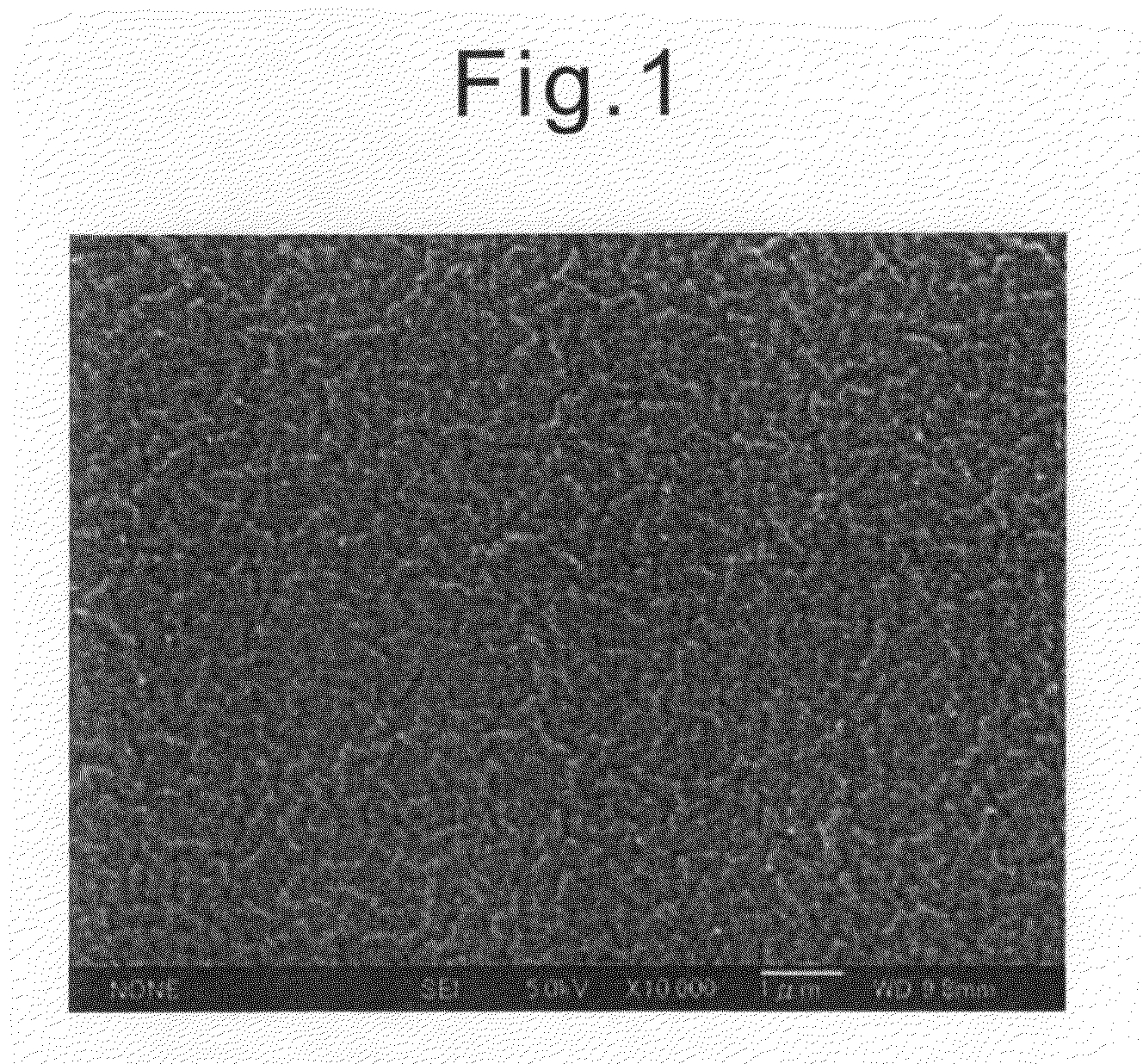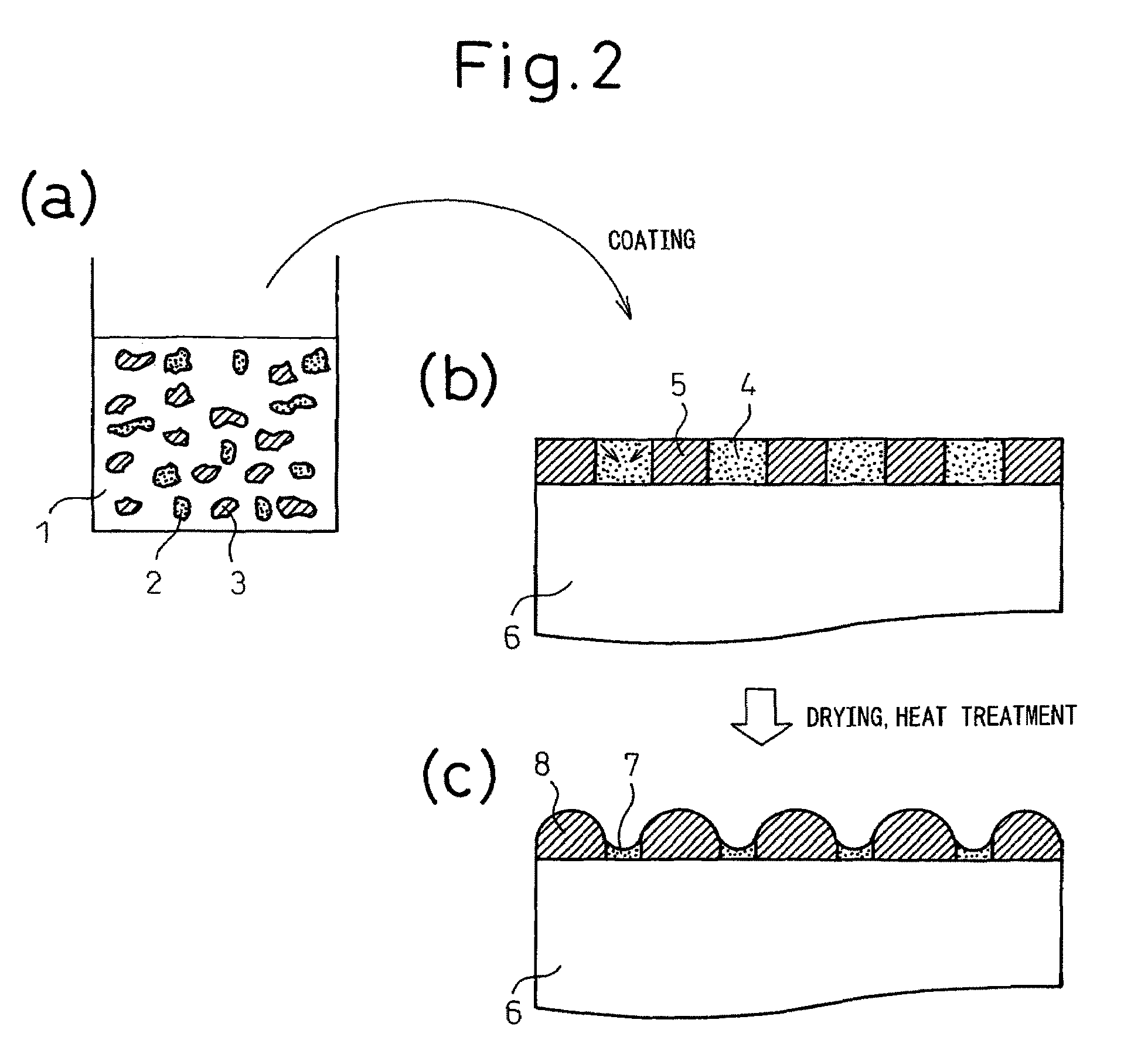Coating solution for forming flat-surface insulating film, flat-surface insulating film-coated substrate, and production method of a flat-surface insulating film-coated substrate
a technology of flat-surface insulating film and coating solution, which is applied in the direction of plastic/resin/waxes insulators, natural mineral layered products, transportation and packaging, etc., can solve the problems of inability to form electronic devices, irregular surface, and inorganic fillers exposed to the film surfa
- Summary
- Abstract
- Description
- Claims
- Application Information
AI Technical Summary
Benefits of technology
Problems solved by technology
Method used
Image
Examples
example 1
[0055]Polydimethylsiloxane (with the terminal group being silanol) was used as the poly(diorgano)siloxane A and titanium tetraisopropoxide was used as the metal alkoxide B. As for production conditions, the mass average molecular weight Mw of polydimethylsiloxane, the molar ratio A / B of the poly(diorgano)siloxane A to 1 mol of the metal alkoxide B, the kind of the organic solvent C, the solubility of water in 100 g of the organic solvent C, and the molar ratio C / A of the organic solvent C to 1 mol of the poly(diorgano)siloxane A are shown in Table 1. Ethyl-3-oxobutanoate as a chemical modifier for the metal alkoxide and titanium tetraisopropoxide were mixed in a molar ratio of 2:1, polydimethylsiloxane was added to the resulting mixture and after further adding an organic solvent to the mixture, H2O for causing hydrolysis was added to produce a coating solution. The amount of H2O added here was 1.9 mol per mol of the metal alkoxide. In No. 24 of Comparative Example of Table 1, an or...
example 2
[0058]The poly(diorgano)siloxane A (with the terminal group being silanol) and metal alkoxide B shown in Table 3 were used. The mass average molecular weight Mw of the poly(diorgano)siloxane is shown together in Table 3. The molar ratio A / B of the poly(diorgano)siloxane A to 1 mol of the metal alkoxide B was 0.25. n-Butanol (C4H8OH, solubility of water in 100 g of n-butanol: 19.8 g / 100 g) was used as the organic solvent C and the molar ratio C / A of the organic solvent C to 1 mol of the poly(diorgano)siloxane A was set to 20. Ethyl 3-oxobutanoate as a chemical modifier for the metal alkoxide B and the metal alkoxide were mixed in a molar ratio of 2:1, the poly(diorgano)siloxane A was added to the resulting mixture and after further adding the n-butanol solvent to the mixture, H2O for causing hydrolysis was added to produce a coating solution. The amount of H2O added here was 2.0 mol per mol of the metal alkoxide.
[0059]The coating solution produced through the procedure above was coat...
PUM
| Property | Measurement | Unit |
|---|---|---|
| molar ratio A/B | aaaaa | aaaaa |
| molar ratio C/A | aaaaa | aaaaa |
| thickness | aaaaa | aaaaa |
Abstract
Description
Claims
Application Information
 Login to View More
Login to View More - R&D
- Intellectual Property
- Life Sciences
- Materials
- Tech Scout
- Unparalleled Data Quality
- Higher Quality Content
- 60% Fewer Hallucinations
Browse by: Latest US Patents, China's latest patents, Technical Efficacy Thesaurus, Application Domain, Technology Topic, Popular Technical Reports.
© 2025 PatSnap. All rights reserved.Legal|Privacy policy|Modern Slavery Act Transparency Statement|Sitemap|About US| Contact US: help@patsnap.com



